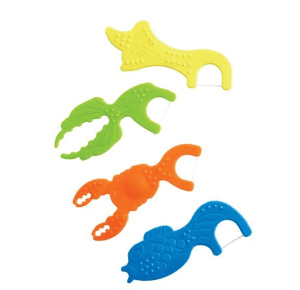Teaching Kids to Use Dental Floss: When, Why and How
Oral hygiene is a lifelong endeavor, and instilling good habits from a young age is crucial to maintaining healthy teeth and gums. While brushing is the most familiar aspect of dental care for kids, teaching them to use dental floss is equally important. In this comprehensive guide, we’ll introduce when and why you should teach kids to use dental floss, and provide practical tips on how to make flossing a part of their daily routine.
The Importance of Teaching Kids to Floss
Flossing plays a vital role in oral hygiene. While brushing helps clean the surfaces of teeth, flossing addresses the areas between teeth and along the gumline, where food particles and plaque tend to accumulate. Teaching kids to floss offers several benefits:
- Preventing Cavities: Flossing removes trapped food particles and plaque, reducing the risk of cavities between teeth.
- Gum Health: Flossing helps prevent gum disease by removing debris that can lead to inflammation and infection.
- Fresh Breath: Flossing removes food particles that can cause bad breath.
- Life-Long Habit: Teaching flossing from a young age helps children establish a lifelong habit of good oral hygiene.
When to Start Teaching Flossing
The question of when to start teaching kids to floss is a common one. The American Dental Association (ADA) recommends introducing flossing when your child’s teeth start to fit closely together. Typically, this occurs around the ages of 2 to 6, when primary (baby) teeth are replaced by permanent ones. However, it’s important to remember that every child is different, and readiness varies.
Here are some signs that your child may be ready to learn flossing:
- Teeth are touching: When teeth are close enough together to trap food particles, it’s time to start flossing.
- Coordination: Your child has the dexterity and coordination to hold the floss and guide it between teeth.
- Willingness: Your child shows an interest in learning and is cooperative during oral care routines.
How to Teach Kids to Floss
Now that you know when to start, let’s delve into how to teach kids to floss effectively:
1. Choose the Right Tools:
- Begin by selecting the appropriate dental floss tools. Kid-friendly floss picks or flossers are often easier for children to handle than traditional dental floss. These picks are designed with small hands in mind.
2. Make It Fun:
- Turn flossing into a game or a fun activity. You can create a “flossing chart” where your child marks off each successful flossing session. Small rewards or stickers can also provide motivation.
3. Demonstrate:
- Show your child how to floss by using exaggerated motions. Explain that the floss is like a superhero that swoops in to save the day by removing “bad guys” (food particles) from between teeth.
4. Supervise:
- Especially in the beginning, supervise your child’s flossing routine to ensure they’re doing it correctly and not using too much force.
5. Gentle Guidance:
- Teach your child to be gentle. Flossing should not hurt. Encourage them to use soft, controlled movements.
6. Use Visual Aids:
- Books, videos, or online resources designed for kids can help reinforce the importance of flossing and make it more engaging.
7. Develop a Routine:
- Incorporate flossing into your child’s daily oral care routine, ideally before bedtime. Consistency is key to forming a good habit.
8. Lead by Example:
- Children often learn by watching adults. Flossing together can make it a family activity and set a positive example.
Common Challenges and Solutions
Teaching kids to floss may come with some challenges. Here are common issues and solutions:
1. Resistance:
- Some children may resist flossing. In such cases, maintain a patient and positive attitude. Explain the benefits and engage in a gentle conversation about why it’s important.
2. Lack of Coordination:
- Children may find it difficult to handle floss picks at first. Be ready to assist and offer guidance until they develop the necessary coordination.
3. Skipping Teeth:
- Children may skip certain teeth or areas. Emphasize the importance of flossing between every tooth to maintain comprehensive oral hygiene.
4. Discomfort:
- If your child experiences discomfort while flossing, ensure they are using gentle motions. If discomfort persists, consult a dentist.
Teaching kids to floss is an investment in their future oral health. By starting at the right age, using the appropriate tools, making it fun, and providing gentle guidance, you can instill this crucial habit in your child. Remember, forming good oral hygiene habits early can lead to a lifetime of healthy smiles.




